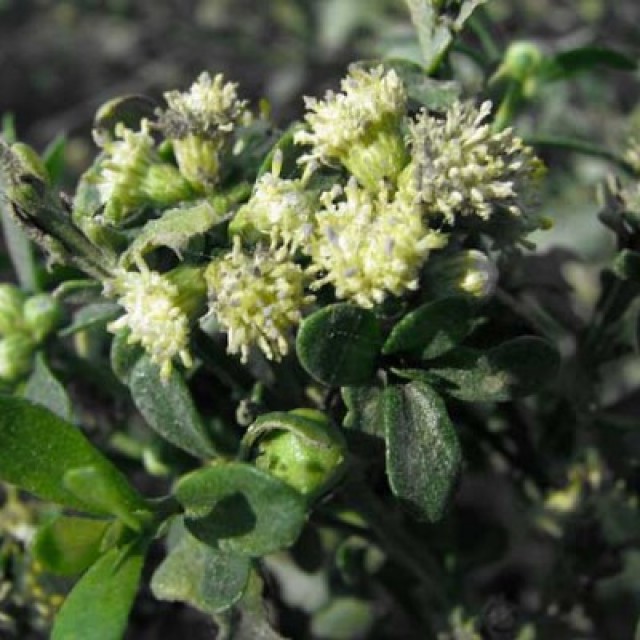COMMON NAME
Coyote brush
SCIENTIFIC NAME
Baccharis pilularis
ALSO KNOWN AS
Chaparral broom, Coyote bush
Plant family
Aster (Asteraceae)
Plant group
Broadleaf Evergreens
157 reports
Identification hints
There are several species of broom-like plants (Baccharis) which occur in chaparral habitats. The dark green, small (1.5 cm; 0.6 in), thick, coarsely toothed, oval-shaped to wedge-shaped leaves and small dense white heads of flowers less than 5 mm (0.2 in) of coyote bush contrast with the the larger (2- 5 cm; 0.6 - 2.0 in) oblong-shaped leaves and larger flower heads (6 - 8 mm; 0.2 - 0.3 in) of the closely related Baccharis emoryi. The other species have either straight stiff rod-like stems and small narrow (linear) leaves (B. sarothroides) or long narrow willow-like leaves (B. salicifolia, B. glutinosa).
Did you know?
Coyote Brush needs sun to thrive, so you won't find it in mature, long-established chaparral. Following fire, however, it is an abundant colonizer, both from seed and as root-sprouts, and can be found with California Sagebrush, Monkey flower and other short-lived shrubs. Look out for insect visitors that come for its nectar, including wasps, native butterflies, and flies. The flowers are tiny, but they are nevertheless an important source of nutrition for these insects. In Santa Barbara coastal sage scrub communities, spittlebugs and tiger beetles are often found on the stems and leaves.
- 2021 Chicago Botanic Garden. All Rights Reserved.
-
Creative Commons
BY-NC-SA 4.0 - Terms of Use
- Privacy Policy
- Data Sharing and Citation Policies
- 2021 Chicago Botanic Garden. All Rights Reserved.



